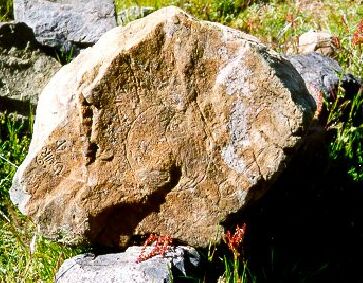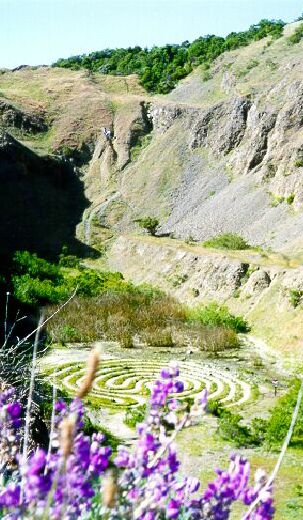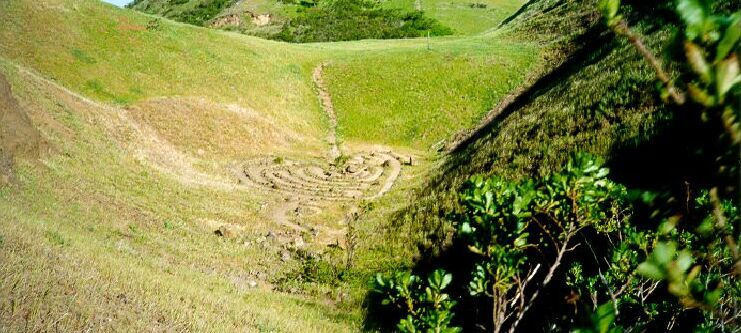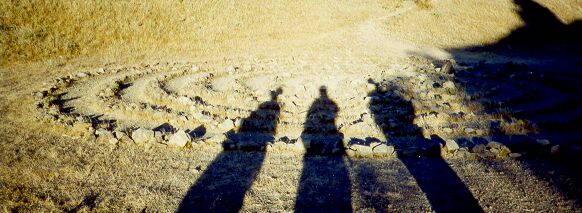The View from the Entrance

This trail then climbs to a peak and veers to the right, out of sight in this picture, and loops back, eventually, to this very same view point. Where the trail veers to the right we will find Labyrinth Two.
Also at the peak the trail merges to the left with Volcanic Trail. That path will take us to two more labyrinths, Labyrinth 3 and 4. Near the center and top of this view is a clump of trees. Just below the trees is an abandon quarry where the third labyrinth lies hidden. Number four is just behind the dirt bluff that appears, in this picture, to be at the top of Round Top Loop Trail.
Labyrinth Number One

This is a Cretian labyrinth, as were all of the labyrinths I saw in the park. It appears to be about 20 feet across. For a little accuracy, I laid my jacket on the hill just beyond it to be used as a size reference.
When I found it, it was in disarray. It appeared to have been vandalized as many of the paths had been intentionally disturbed with rocks turned, obviously, into non-conformative ways. I replaced a few rocks where I thought they belonged and somewhat reconstructed it to be as the picture shows.
The paths had remnants of past usage by, what was later described by my friend, Cassandra, as pagan groups performing rituals. There were bouquets of wild flowers that were gathered into small hand-size bunches and laid here and there about the path. There was, among other tokens, the small cover of a childrens book in the center. There were other small man-made and natural trinkets about the winding trail of little monetary value but, possibly, of some significant other value to the person that had left it.




